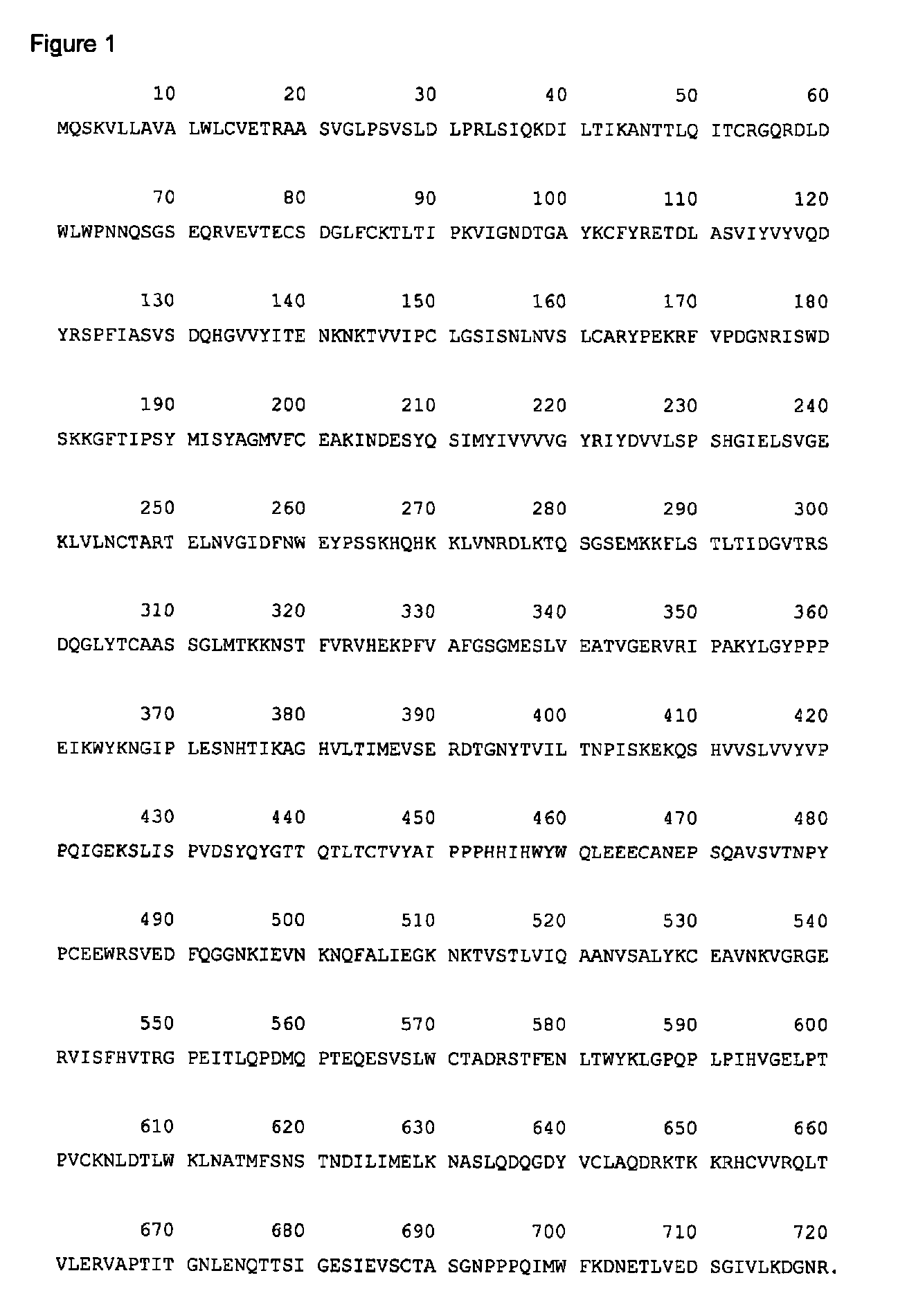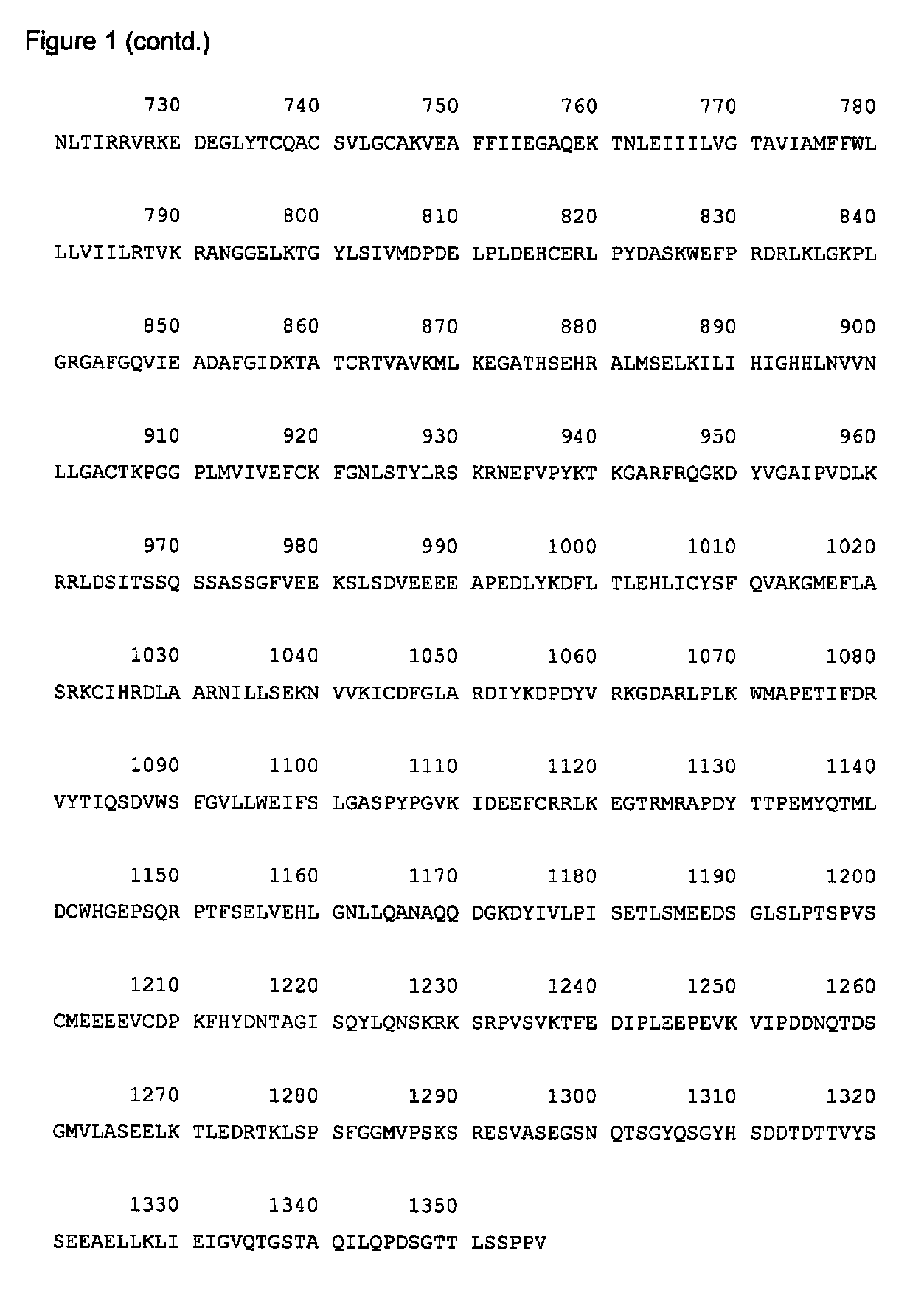Method for producing high yield attenuated Salmonella strains
a technology of attenuated mutant salmonella and high yield, which is applied in the field of growing attenuated mutant salmonella typhi strains, to achieve the effects of high cell yield, safe and economic manufacture, and high yield
- Summary
- Abstract
- Description
- Claims
- Application Information
AI Technical Summary
Benefits of technology
Problems solved by technology
Method used
Image
Examples
example 1
Isolation of Salmonella typhi Ty21a Strain for the Preparation of the Research Seed Lot (RSL)
[0156]The first step in the preparation of the RSL consisted of the isolation of the attenuated Salmonella typhi Ty21a strain from TYPHORAL L® (typhoid oral vaccine comprising Ty21a) capsules followed by the transformation of the attenuated bacteria with the plasmid DNA (pVAX10.VR2-1).
[0157]The commercially available TYPHORAL L® (typhoid oral vaccine Comprising Ty21a) capsules, containing an attenuated Salmonella enterica serovar typhi Ty21a strain, were used to prepare the stock of S. typhi to be used in the recombinant studies indicated below The process consisted of inoculating a liquid culture medium with part of the content of the capsules and further plating the liquid culture onto an agar medium for the purpose of isolating single bacterial colonies. Single colonies were isolated and grown in liquid culture medium. Two cultures, namely VAX.Ty21-1 and VAX.Ty21-2, were then formulated w...
example 2
Plasmid Construction
[0158]The principle of plasmid synthesis is based on double strand in vitro gene synthesis with the following steps:[0159]The whole pVAX10-VR2.1 plasmid sequence of 7.58 kB was subdivided (by software analysis) in 5 sections of ˜1.5 kB. Each section was subdivided into 40-50 bp oligonucleotides each having overlapping regions between oligonucleotides of both strands[0160]The in vitro synthesized oligonucleotides were then phosphorylated by incubation with T4 polynucleotide kinase[0161]After the annealing process of overlapping oligonucleotides under appropriate conditions, the Taq DNA ligase enzyme connected the aligned oligonucleotides[0162]Upon completion of the ligation step, PCR was performed using primers annealed at outward positions, to increase the yield of the ligated plasmid fragments (˜1.5 kB)[0163]A preparative agarose gel electrophoresis was performed to isolate the PCR products[0164]The isolated PCR products were cloned into TOPO vectors (Invitrogen...
example 3
Manufacturing Processes
[0170]The following Table 2 summarizes the processes of manufacture with / without glucose feeding during fermentation.
[0171]
ProductionstepProcess variant A: with glucose feedingProcess variant A: without glucose feedingPreculture Clean room class D and A in DFermentation30 L Fermentation volume100 L Fermentation volumeClean roomTSB + 0.001% galactoseTSB + 0.001% galactoseclass D30° C.30° C.Airflow 2 l / min (0.07 vvm)Airflow 100 L / min (1 vvm)pressure 1 barpressure not controlledpH 7.0 controlled with NaOHpH 7.0 controlled with NaOHpO2 ≧ 40 % regulated by stirrerfoam controlled (Corning)glucose feeding Σ 5-8 g / lpO2 ≧ 40 % regulated by stirrerFinal OD600 nm~2.7 (target 6-10)stirrer minimum 200 rpmCooling to 15° C. before harvestno glucose feedingFinal OD600 nm (end of exponential growth phase)Cooling to at least 25° C. before harvestHarvest / Cross flow filtrationCross flow filtrationconcentration / 10 fold concentration10 fold concentrationwash10 fold buffer exchange ...
PUM
| Property | Measurement | Unit |
|---|---|---|
| volume | aaaaa | aaaaa |
| volume | aaaaa | aaaaa |
| volume | aaaaa | aaaaa |
Abstract
Description
Claims
Application Information
 Login to View More
Login to View More - R&D
- Intellectual Property
- Life Sciences
- Materials
- Tech Scout
- Unparalleled Data Quality
- Higher Quality Content
- 60% Fewer Hallucinations
Browse by: Latest US Patents, China's latest patents, Technical Efficacy Thesaurus, Application Domain, Technology Topic, Popular Technical Reports.
© 2025 PatSnap. All rights reserved.Legal|Privacy policy|Modern Slavery Act Transparency Statement|Sitemap|About US| Contact US: help@patsnap.com



